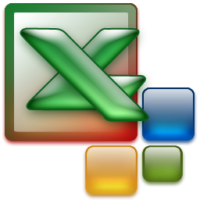The chart summarizes where specific emerging technologies might be applicable and identifies the chapters from Today's Lean Leader where these technologies are specifically referenced. This is not completely comprehensive as emerging technologies change nearly daily. Leaders must be cognizant of emerging technologies and use them appropriately where they can improve their overall effectiveness, or the effectiveness of the team.
Lean and problem solving applies to all stages of the design-bid-build construction project. It is all about conveying the Plan-Do-Check-Act (PDCA) cycle of problem solving with a long term Lean focus. The unique problems of the construction industry can be solved by using many of the tools and concepts of Lean and Six Sigma.
-
Sale!
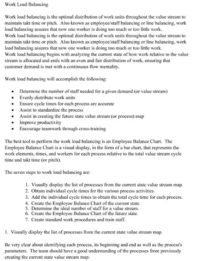
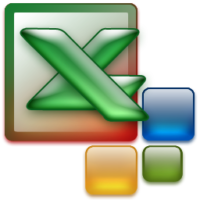 Work load balancing is the optimal distribution of work units throughout the value stream to maintain takt time or pitch. Also known as employee/staff balancing or line balancing, work load balancing assures that now one worker is doing too much or too little work. Work load balancing begins with analyzing the current state of how work relative to the value stream is allocated and ends with an even and fair distribution of work, ensuring that customer demand is met with a continuous flow mentality. The Employee Balance eTool will make this process easier by allowing you to enter the various process activities and cycle times, as well as automatically displaying them in bar graph form. This eTool is a fully customizable Microsoft Excel file. Everything is here and ready for you to get started!
Work load balancing is the optimal distribution of work units throughout the value stream to maintain takt time or pitch. Also known as employee/staff balancing or line balancing, work load balancing assures that now one worker is doing too much or too little work. Work load balancing begins with analyzing the current state of how work relative to the value stream is allocated and ends with an even and fair distribution of work, ensuring that customer demand is met with a continuous flow mentality. The Employee Balance eTool will make this process easier by allowing you to enter the various process activities and cycle times, as well as automatically displaying them in bar graph form. This eTool is a fully customizable Microsoft Excel file. Everything is here and ready for you to get started! -
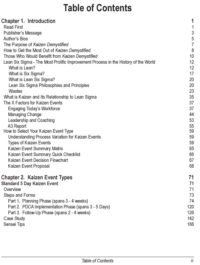
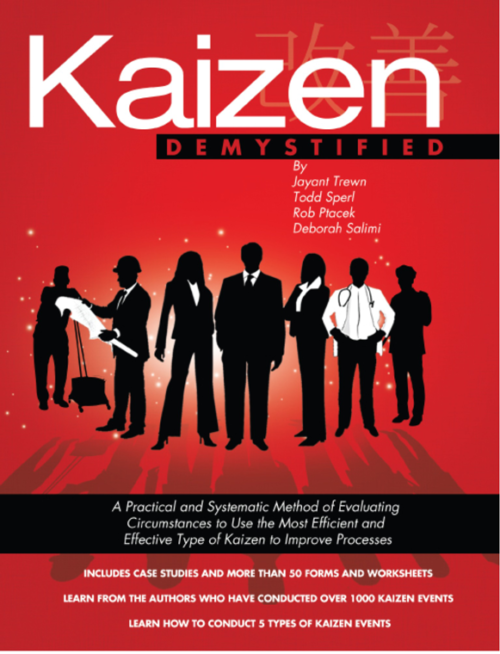 By: Jayant Twewn (PhD), Todd Sperl, Rob Ptacek, and Deborah Salimi (PhD)
By: Jayant Twewn (PhD), Todd Sperl, Rob Ptacek, and Deborah Salimi (PhD)
We are pleased to present Kaizen Demystified, perfectly timed for today s ever-changing and ever-demanding business environment requiring improved processes. Whether your industry is manufacturing, healthcare, financial, education, armed forces, services, government, or the construction industry, or, you are a manager, supervisor, team leader, or a front-line worker, this book will provide new insights and ideas for managing and facilitating continuous improvement and problem solving projects (i.e., Kaizen Events). Kaizen Demystified provides a simple and practical approach detailing five distinct methods on how Lean (and Six Sigma) tools and concepts can quickly and efficiently be applied and managed to solve business problems and improve processes. The five types of Kaizen Events detailed in this book are the: (1) Standard 5 Day Kaizen Event, also referred to as a Kaizen Blitz or Rapid Improvement Event, (2) Rolling Kaizen Event, (3) Web Based Kaizen Event, (4) Today's Kaizen Event, and (5) Wiki (or Quick) Kaizen Event. Each type will be thoroughly explained to demystify what it may mean for you. Kaizen Event Leadership is thoroughly explored in a separate chapter/section that relates to all types of Kaizen Events. It provides a listing of the common issues facing the leader of a Kaizen Event as well as suggested how-to leadership skills to address those issues. This is one of the most important aspects of leading any type of Kaizen Event. -
Sale!
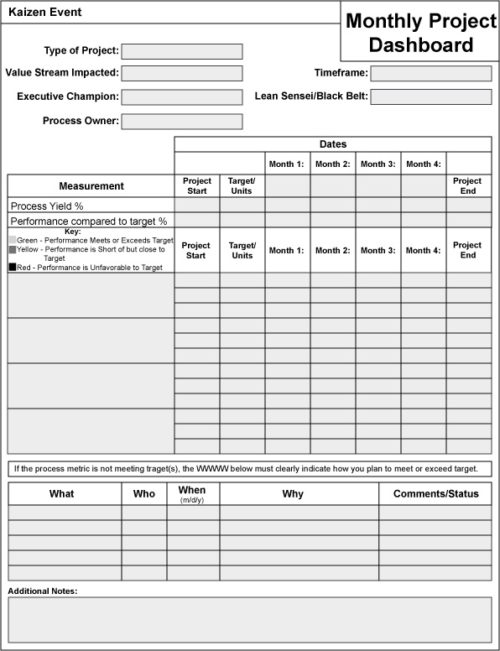
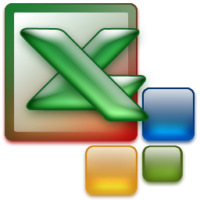 The Kaizen Demystified Worksheets allow you to customize the tools, concepts, practices, and worksheets demonstrated in the Kaizen Demystified book. These 46 electronic worksheets will allow for an effective and efficient application of engaging people in a Kaizen Event. Delivered as customizable Excel worksheets.
The Kaizen Demystified Worksheets allow you to customize the tools, concepts, practices, and worksheets demonstrated in the Kaizen Demystified book. These 46 electronic worksheets will allow for an effective and efficient application of engaging people in a Kaizen Event. Delivered as customizable Excel worksheets. -
Sale!
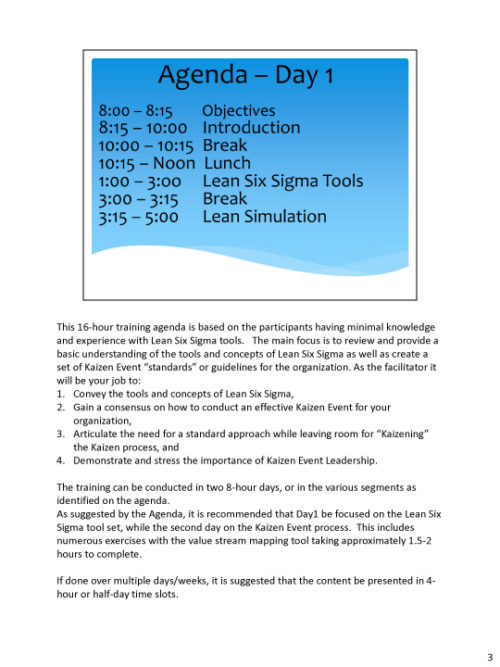
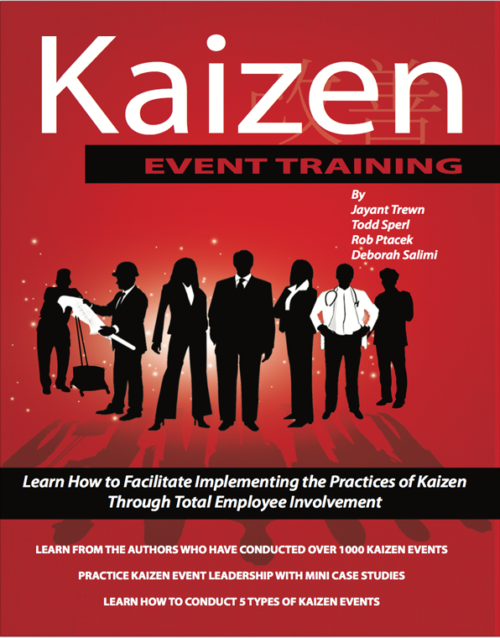 By: Jayant Trewn, PhD, Todd Sperl, Rob Ptacek, and Deborah Salimi, PhD The Kaizen Event Training package is your comprehensive set of materials to facilitate the training of those within your organization responsible for implementing continuous improvement projects (i.e., Kaizen Events). Five types of Kaizen Events will be detailed allowing teams to conduct full 5-day type events to conveying approaches on how individuals can contribute via kaizen in improving daily processes. The five types of Kaizen Events are: Standard 5 Day Kaizen Event, Rolling Kaizen Event, Web Based Kaizen Event, Today's Kaizen Event, and Wiki (or Quick) Kaizen Event. The materials are based on the best selling book, Kaizen Demystified which was written by authors/consultants with having conducted over 1,000 Kaizen Events! The training is for Black or Green Belts, Continuous Improvement Specialists, Lean Senseis, departmental supervisors and managers, work group or team leaders, etc. - basically, anyone that has someone reporting to them and is responsible for improving processes. Or, it can be used for Green Belt training or for those individuals who have little or no experience with Lean Six Sigma.
By: Jayant Trewn, PhD, Todd Sperl, Rob Ptacek, and Deborah Salimi, PhD The Kaizen Event Training package is your comprehensive set of materials to facilitate the training of those within your organization responsible for implementing continuous improvement projects (i.e., Kaizen Events). Five types of Kaizen Events will be detailed allowing teams to conduct full 5-day type events to conveying approaches on how individuals can contribute via kaizen in improving daily processes. The five types of Kaizen Events are: Standard 5 Day Kaizen Event, Rolling Kaizen Event, Web Based Kaizen Event, Today's Kaizen Event, and Wiki (or Quick) Kaizen Event. The materials are based on the best selling book, Kaizen Demystified which was written by authors/consultants with having conducted over 1,000 Kaizen Events! The training is for Black or Green Belts, Continuous Improvement Specialists, Lean Senseis, departmental supervisors and managers, work group or team leaders, etc. - basically, anyone that has someone reporting to them and is responsible for improving processes. Or, it can be used for Green Belt training or for those individuals who have little or no experience with Lean Six Sigma. -
Sale!
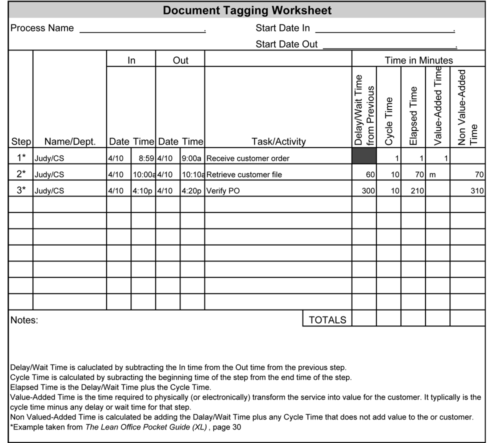
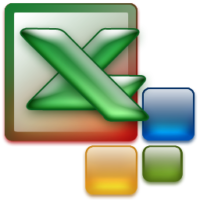 The Kaizen Worksheets include all the forms and checklists you need to conduct a Kaizen event. These are meant to support your internal kaizen event process. For more detail on how to conduct a kaizen event for your industry, please check The Lean Store.com for more workbooks detailing the process. Delivered as customizable Excel worksheets.
The Kaizen Worksheets include all the forms and checklists you need to conduct a Kaizen event. These are meant to support your internal kaizen event process. For more detail on how to conduct a kaizen event for your industry, please check The Lean Store.com for more workbooks detailing the process. Delivered as customizable Excel worksheets. -
Sale!
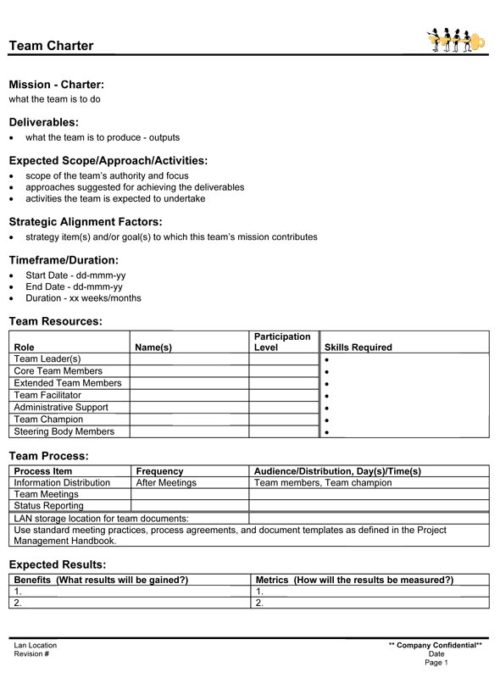
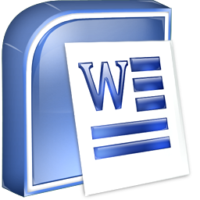 This set of forms has proven successful in many Fortune 500 companies. The key to any project or continuous improvement is effective communications and alignment to the strategic goals of the organization. Delivered as customizable Word documents.
This set of forms has proven successful in many Fortune 500 companies. The key to any project or continuous improvement is effective communications and alignment to the strategic goals of the organization. Delivered as customizable Word documents. -
Sale!
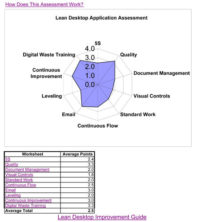
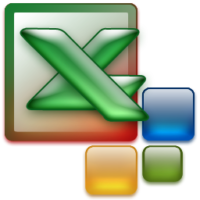 The Lean Desktop Application Assessment allows an individual or group to evaluate current information and data flow relative to Lean concepts and tools. The Assessment is a customizable Microsoft Excel spreadsheet that will serve as a baseline as improvements are made over time, The Lean Desktop Application Assessment should take 5 - 10 minutes for an individual to complete and 30 - 45 minutes for a work group to complete (fill out, not create). Subsequent analysis for the work group may require an additional 1 - 2 hours to plan their first Lean Desktop project from the results of the assessment. The Assessment has 10 main categories that are each linked to an Instruction Sheet that details that particular category as well as to the Overview Sheet (Radar Chart). The score will assist you into allocating the appropriate resources in your Lean Desktop project. The Assessment has 10 main categories of 5S, Quality, Document Management, Visual Controls, Standard Work, Continuous Flow, Email, Leveling, Continuous Improvement, and Digital Waste Training, as well as 34 sub-categories.
The Lean Desktop Application Assessment allows an individual or group to evaluate current information and data flow relative to Lean concepts and tools. The Assessment is a customizable Microsoft Excel spreadsheet that will serve as a baseline as improvements are made over time, The Lean Desktop Application Assessment should take 5 - 10 minutes for an individual to complete and 30 - 45 minutes for a work group to complete (fill out, not create). Subsequent analysis for the work group may require an additional 1 - 2 hours to plan their first Lean Desktop project from the results of the assessment. The Assessment has 10 main categories that are each linked to an Instruction Sheet that details that particular category as well as to the Overview Sheet (Radar Chart). The score will assist you into allocating the appropriate resources in your Lean Desktop project. The Assessment has 10 main categories of 5S, Quality, Document Management, Visual Controls, Standard Work, Continuous Flow, Email, Leveling, Continuous Improvement, and Digital Waste Training, as well as 34 sub-categories. -
Sale!
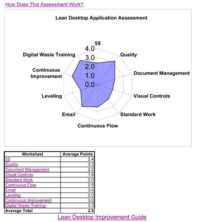
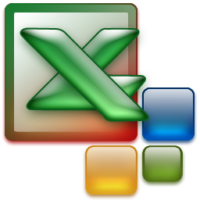 The Lean Office Assessment was created allowing a departmental work group or individual to continually assess their Lean or continuous improvement initiatives. The Lean Office Assessment is a customizable Microsoft Excel spreadsheet that will provide a baseline from which you can then improve your administrative processes. It also can assist in determining which Lean tools may be of value during a continuous improvement project. The Lean Office Assessment has 10 Lean building block categories that are further divided into 34 sub-categories that are individually scored. All categories are automatically linked to the Overview page which displays a Radar (or Spider) Chart of the total category scores. The score will assist you into allocating the appropriate resources in your Lean project. When conducting the Assessment the work group or individual must relate their database management procedures and Microsoft Office practices to the overall concepts and tools referenced. The 10 categories are: 5S, Quality, Physical Layout, Visual Controls, Standard Work, Continuous Flow, Pull Systems, Leveling, Continuous Improvement, and Training.
The Lean Office Assessment was created allowing a departmental work group or individual to continually assess their Lean or continuous improvement initiatives. The Lean Office Assessment is a customizable Microsoft Excel spreadsheet that will provide a baseline from which you can then improve your administrative processes. It also can assist in determining which Lean tools may be of value during a continuous improvement project. The Lean Office Assessment has 10 Lean building block categories that are further divided into 34 sub-categories that are individually scored. All categories are automatically linked to the Overview page which displays a Radar (or Spider) Chart of the total category scores. The score will assist you into allocating the appropriate resources in your Lean project. When conducting the Assessment the work group or individual must relate their database management procedures and Microsoft Office practices to the overall concepts and tools referenced. The 10 categories are: 5S, Quality, Physical Layout, Visual Controls, Standard Work, Continuous Flow, Pull Systems, Leveling, Continuous Improvement, and Training. -
Sale!
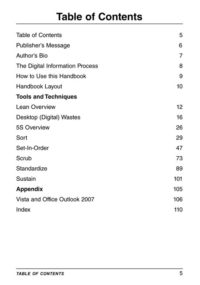
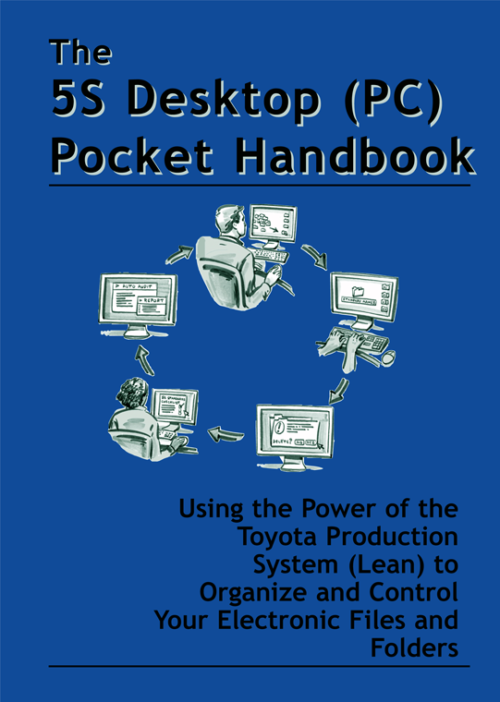 By: Vlado Baban
By: Vlado Baban
The 5S Desktop (PC) Pocket Handbook is a step-by-step guide for the implementation of 5S to all your electronic files. The XP version of Windows Explorer and the Office 2003 software suite were the versions used in creating this handbook. This handbook is designed to be:- An implementation guide. This handbook steps you through each phase of the 5S process. Examples are shown to assist you in this process. No two file systems (Desktops) are the same; therefore, use the examples as a guide when you apply that phase or step to your Desktop.
- A Lean beginning. 5S is a fundamental Lean tool and is considered the foundation for additional Lean tool application. Once 5S has been implemented and results have been obtained, there will be a need to integrate more Lean tools into your Desktop environment.
- A spark for the department. Once everyone understands the basic premise of Lean and 5S, then that understanding can serve as a catalyst for a more comprehensive application of Lean tools. (iLean and Lean Office Demystified II are available books on how additional Lean tools can be applied to your Desktop environment.)
- A bridge for improved performance. It is often stated that the average person at work today has nearly 80 emails to deal with on a daily basis. This, along with the other application files, can at times be overwhelming for the individual. Using 5S for organizing your emails, as well as the other application files, will greatly assist in managing this barrage of information. Implementing 5S to your files and folders will allow for a more stress-free workplace.
-
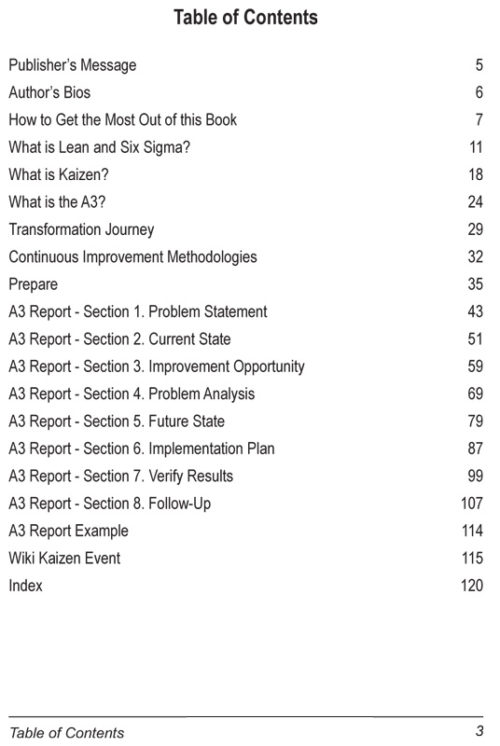
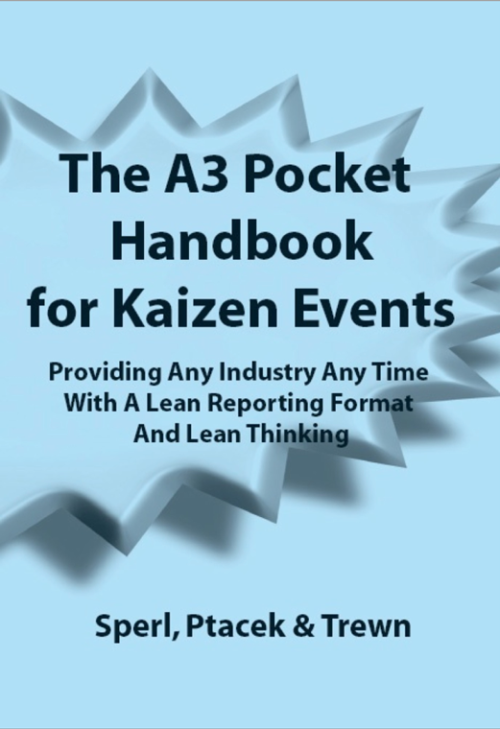 By: Todd Sperl, Rob Ptacek, Jayant Trewn (PhD)The A3 Pocket Handbook for Kaizen Events allows team members to be literally and figuratively on the same page when participating in an improvement event. This allows more ownership, while at the same time preserving organizational knowledge. The improvement methodology used (i.e., Six Sigma D-M-A-I-C, PDCA, etc.) will relate to the A3 Report that is conveyed in this publication. (The A3 Report is designed to help you “tell the story” in a logical and visual way and act as a road map for continuous improvement and problem solving initiatives.) The purpose of this pocket handbook is to:
By: Todd Sperl, Rob Ptacek, Jayant Trewn (PhD)The A3 Pocket Handbook for Kaizen Events allows team members to be literally and figuratively on the same page when participating in an improvement event. This allows more ownership, while at the same time preserving organizational knowledge. The improvement methodology used (i.e., Six Sigma D-M-A-I-C, PDCA, etc.) will relate to the A3 Report that is conveyed in this publication. (The A3 Report is designed to help you “tell the story” in a logical and visual way and act as a road map for continuous improvement and problem solving initiatives.) The purpose of this pocket handbook is to:- Ensure all team members have a quick reference for Lean Six Sigma definitions.
- Compliment, as a mini-workbook, the Practical Lean Six Sigma for Healthcare and The Lean Six Sigma Pocket Guide XL books as well as any other training materials used in an improvement event.
- Provide a road map for continuous improvement projects if no other methodology (i.e., PDCA, D-M-A-I-C, etc.) is used.
- Provide Lean Thinking Statement assessments at the end of each section for employees to “think” Lean and continue their engagement.
- Be a repository of thoughts, ideas, and any action items that may be assigned, etc.
- To retain organizational knowledge by being a personal detailed log of the Kaizen Event to be shared and/or referenced later.
-
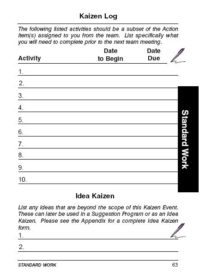
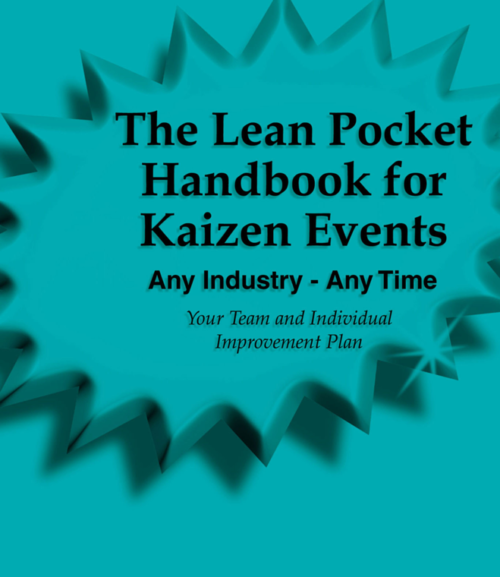 The Lean Pocket Handbook for Kaizen Events is your personal (i.e., individual) Lean planner for the 21st century. We have found individuals that use this pocket handbook feel more part of the Kaizen team. They also continue to contribute improvement ideas well past the formal team Kaizen Event. That is what Lean is all about - making those small, incremental, improvements daily (i.e., hour-by-hour and minute-by-minute) by those closest to the process.This handbook is designed to be:
The Lean Pocket Handbook for Kaizen Events is your personal (i.e., individual) Lean planner for the 21st century. We have found individuals that use this pocket handbook feel more part of the Kaizen team. They also continue to contribute improvement ideas well past the formal team Kaizen Event. That is what Lean is all about - making those small, incremental, improvements daily (i.e., hour-by-hour and minute-by-minute) by those closest to the process.This handbook is designed to be:- A quick-reference guide. Lean tools are explained in more detail in other manuals or by your facilitator during the instruction portion of the workshop.
- Your individual (i.e., personal) log. When working outside the formal training class, notes and ideas about the area or process that are being analyzed can be easily written down in this handbook (serving as your personal log) so as not to lose valuable process information.
- Your personal Kaizen planner. Kaizen Events will require that individual tasks be assigned to team members to be completed prior to the next meeting. Many of these tasks will need to be scheduled within the individual’s current work day. This handbook will thus serve as your “planner” to assure these tasks are adequately planned and completed on time.
- A tool to self-initiate Idea Kaizens. An Idea Kaizen is an individual that implements an improvement with little or no assistance or resource required. This is similar to a Suggestion Program submission; however, the individual with the Idea Kaizen would be responsible for immediate implementation of the idea.
- A learning tool. Each tool will have illustrations to graphically represent the essence of each tool. This will allow you to better understand and learn about each tool prior to using them in your Kaizen Event.

